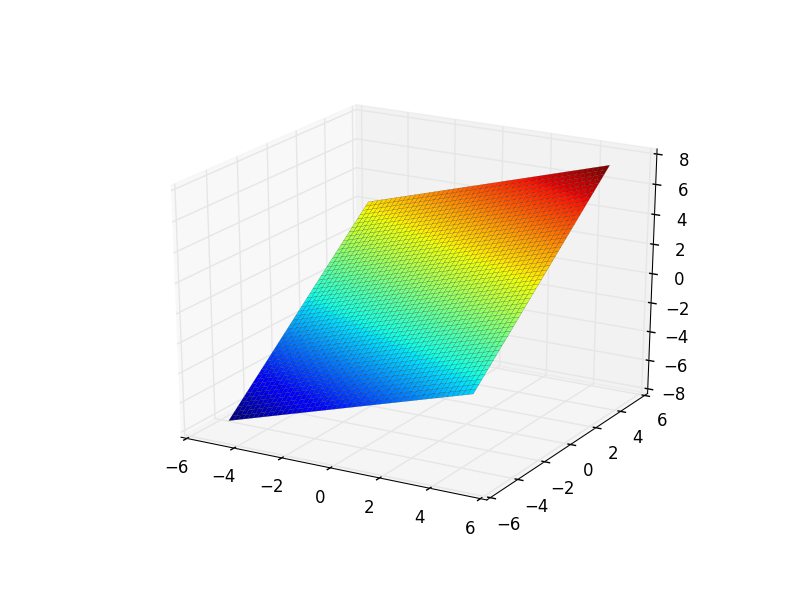I'm creating a Spark linear algebra library but wanted to plot a few graphs to get an idea of what's going on. These are the tools I tried.
Sympy
Sympy looked good as it allowed implicit functions. For instance, you can write:
from sympy import symbols
from sympy.plotting import plot3d
x, y = symbols('x y')
p = plot3d((x/2) + y, (x, -5, 5), (y, -5, 5))
The problem was that "SymPy uses Matplotlib behind the scenes to draw the graphs" [1] and Matplotlib has some issues in the z-order while rendering.
So, although SymPy gives you a lot more than just plotting, I moved on to...
Mayavi
... which renders things beautifully.
Until I tried to do something clever.
First, I had to update pip. Then, with, I tried:
from mayavi import mlab
.
.
mlab.options.backend = 'envisage'
which gave me:
ImportError: No module named envisage.ui.workbench.api
And after some googling, it looked like I needed to mess around with all sorts of libraries so I was a coward and gave up quickly.
Jzy3d
It turns out that there is a perfectly good Java library called Jzy3d which is quite mature.
Given:
v1 = [8, -2, 2]
v2 = [4, 2, 4]
I wanted to plot these vectors, the surface on which they lie and the shortest distance between this plane and [5, -5, 2] (this exercise can be found in Philip Klein's excellent "Coding the Matrix").
First, I had to convert this information to something Jzy3d can handle - which looks like this:
Mapper plane = new Mapper() {
@Override
public double f(double x, double y) {
return (x + (2 * y)) / 2;
}
};
x = 8s + 4t
y = -2s + 2t
z = 2s + 4t
and solving these simultaneous equations gives us the implicit function:
x + 2y - 2z = 0
or
z = (x + (2 * y)) / 2
which is the equation we find in our Java code above.
Finding the normal to an implicit function is simply the coefficients, that is [1, 2, -2]. At the point the normal meets [5, -5, 2] (which we'll call b) is the point where u b =s v1 + t v2. Once again, convert to parametric equations and then solve the simultaneous equations and you'll find t=-0.5 and s=1. This will give the point [6, -3, 0] and Jzy3d renders it like this:
where the red line is the normal, the green line is the point and the blue line is the closest point on the surface.
The rendering can be a bit jagged and I need to look at adding arrows to the vectors but so far, this seems to be the easiest plotting library to use.
[1] Doing Math with Python (No Starch Press)



No comments:
Post a Comment